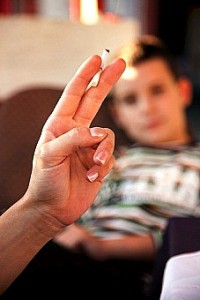The share of American nonsmokers who are exposed to secondhand smoke fell by half since 2000, from 53 percent to 25 percent, according to a new government report.
The Centers for Disease Control and Prevention (CDC) said during the period studied, a growing number of states and municipalities banned smoking in restaurants, bars and offices, and the number of Americans who smoked at home fell. The smoking rate has also declined, and smoking is now less acceptable in public, The New York Times reports.
An estimated one-fourth of American nonsmokers are still exposed to secondhand smoke, the CDC said. Secondhand smoke causes 41,000 deaths from lung cancer and heart disease, as well as 400 deaths from sudden infant death syndrome, according to health experts.
African-Americans, the poor and children are most affected by secondhand smoke, the report noted. Nearly half of black nonsmokers are exposed to secondhand smoke, as are more than two in five nonsmokers who live below the poverty level. About 70 percent of black children ages 3 to 11 are exposed, compared with about 40 percent of white children and 30 percent of Hispanic children.
“About 80 million Americans live in multiunit housing, where secondhand smoke can seep into smoke-free units and shared areas from units where smoking occurs,” Brian King, PhD of the CDC said in a news release. “The potential of exposure in subsidized housing is especially concerning because many of the residents — including children, the elderly, and people with disabilities — are particularly sensitive to the effects of secondhand smoke.”
Published
February 2015
 Get Support
Get Support

